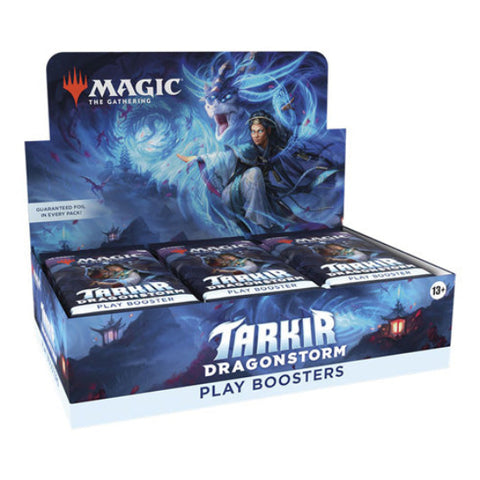To Cap Off 2020 - Top 10 Games of the Decade
Posted by GAMEOLOGY

Where were you a decade ago? Were you graduating university? Getting married? Having your third child?
Here’s a better question: Were you even playing board games ten years ago?
This last decade has been a period of flourishing growth for board gaming and its community. So as our tumultuous 2020 comes to a close, let us reflect on ten of the best board games this decade brought us and why I love them so much.
Creative, ethereal spirits and asymmetric cooperation.
Playing Spirit Island is something truly beautiful. At once deeply strategic and thematically rich, the two, sometimes three, hours it takes to play feel like mere minutes. And that makes sense for a game about spirits who have existed on this fictional island for longer than time can chronicle. The asymmetric spirits play beautifully off each other in cooperation, with each spirit’s strengths filling in another’s weaknesses. A strong blend of asymmetry, cooperation and theme that, like the spirits themselves, will stand the test of time.
Bringing the legacy mechanic to a franchise with a legacy of its own.
For a while, I was under the impression that all legacy games were long and heavy, laden with complex strategies that would take hours to wrap my head around. In 2015, Pandemic Legacy: Season 1 released and introduced the legacy mechanic to the thousands of fans of the original game. Preserving the core of Pandemic gameplay, but adding lasting impact to each of your choices, Pandemic Legacy: Season 1 lets players form their own stories in the familiar cooperative game. Will your scientist survive the whole story? Will London fall to the virus? In Pandemic Legacy, you’re simultaneously the authors and the characters.
No other party game makes you and friends feel quite as clever.
Word games are among some of the most common party games but there’s something special about Decrypto. Maybe it’s the components—red-scrambled cards which you slide into your screens to reveal secret words. Maybe it’s the mechanics—not only do you have to guess your own team’s secret codes, you have to try and intercept the others. Or maybe it’s the feeling you get when you write a clue like “the poetry of crashing waves in springtime” and watch your team’s eyes light up in realisation while the other team descends into confusion. Yeah. That’ll be it.
Traditional and classic, but finely crafted—like a vintage cheese.
It’s not the flashiest of board games. It’s kind of long, the only pretty things are the city dome components, and it often pales in comparison to Terraforming Mars. Heavy and strategic, part worker-placement, part hand-management, Underwater Cities is a Euro-style game, quite solitary, full of miniscule choices that build up into big results. But there’s something devilish in those details—how each turn, you both place a worker and play a card that matches the space’s colour. How the green actions are powerful but the matching cards are weak, and vice versa for the orange. How you need to balance the need for steel to build cities with the need for kelp to keep those cities alive. Out of all the games on this list, this is probably the most traditional—it’s just a city builder with worker placement. But the intricacies of those mechanics and the fine balance between the various elements, that’s what makes Underwater Cities shine.
The bird-themed board game so beautiful I wrote my final university essay on it.
With the aesthetic and artwork to appeal to non-board-gamers and the inherent satisfaction of an engine-building game, Elizabeth Hargrave’s Wingspan is a true beauty. While playing, you’ll often find yourself gazing at the intricate illustrations, reading off the little facts on the bottom of every card. The elegance of the theme even extends into the smoothness of the engine-building mechanics, how filling your wildlife preserves with different bird varieties feels like preparing to take flight, accelerating with every action. A wonderful blend of elegance and engine-building.
A reimagined, app-driven classic.
I have fond memories of playing the traditional social deduction game, Mafia, in high school drama class. We would sit in a huge circle in the theatre and the teacher would act as the Storyteller. Most of the time I just sat there while other people killed and healed and investigated, but I loved the concept. Years later, at a board game night, I played One Night Ultimate Werewolf. With its app, short playtime and dozens of hidden roles, it felt at once familiar and fresh. This game takes everything that sometimes sucks about the traditional Mafia or Werewolf and makes it fun and modern. A great reimagining of a classic.
A semi-cooperative chonker loaded with tension and minis.
At first glance, this game might look like a bloated Kickstarter board game packed with unnecessarily fancy components but not much substance. But something I realised in my first playthrough is that there’s a reason we like nice components, beyond simply aesthetic. In my playthrough with my boyfriend, the first time we ran into the Queen alien and plopped her humongous miniature onto the board, taking up the entire hexagonal room tile and completely dwarfing out itny human minis, I’ll admit it, I was actually kind of scared. Rolling the noise dice and getting the icon that makes you place the thick yellow plastic noise markers in every surrounding corridor, each one making a faint but ominous click, fills you with genuine fear to leave that room. Even the rulebook comes with an introductory short story that walks you through the flow of the game! Nemesis is a game of atmosphere and tension that’s completely worth the price.
Mechs are sick.
When my boyfriend was first getting into board games, Scythe was one of the games he was instantly drawn to. I mean, just look at that artwork. Those beautiful paintings integrate mechs like they were always there, just part of history like any other war machine. Something Scythe does incredibly well is balance scale and flexibility. Though it may look like a wargame on the surface, with its giant mech minis, there are many ways to win in Scythe, many of which are not at all violent. Additionally, Scythe does something similar to Wingspan in that its theme—dieselpunk 1920s Europa with mechs—offers a smooth gateway into its mechanics—area control and resource management. An eye-catching and well-constructed game, both inside and out.
Strategy, sophistication, and handfuls of stunningly tactile tiles (clink-clink).
If you’ve ever felt Azul’s colourful tiles rolling between your fingers, you’ll know the appeal of tactility in board games. In an abstract game like Azul, these tiles help you link the strategy in your mind, to the board beneath your fingers. As you build up your wall of tiles and patterns, you can get lost in both the warm colours and the strategies of placing those warm colours in specific rows and columns. It’s this mix of tactility and abstraction that make Azul a perfect little gateway game.
The RPG that weighs as much as a car tyre—both mentally and physically.
I wince every time I have to pick this game up. And yet, there is no denying that Gloomhaven was one of the most popular board game releases in the last decade, holding the number 1 rank on BoardGameGeek for years on end. This is a game that could become a lifestyle. It could become your routine to play some Gloomhaven every Saturday night, or every single night. With 100 scenarios and an average of 180 hours of gameplay, it’s like a video game RPG! It’s undoubtedly a commitment but its unique cardplay combat, plethora of sealed packets to open up, and compelling world and story make it undeniably worth it.
-
And so the year—and the decade—comes to a close. Take a moment to reflect: what were your favourite games of the decade? We welcome your comments below!
Here’s to another great decade of board gaming!





































